When we strip it back to basics, the two things you need from your speakers when DJing are for them to be loud enough, and for the audio to hit the speakers (and so your ears) the instant you do something on your DJ gear. Loud and instant. That’s it. Surely that’s not too much to ask for?
Well, most speakers nowadays are loud enough, and indeed, the quality on most speakers — even portable, entry-level models – is quite good. They’re certainly good enough for practising DJing with. But when it comes to “instant”, things have been getting steadily worse over the last few years. At the school, we’ve noticed more people in our community experiencing a confusing “delay” between their DJ gear and speakers.
Why delay is “bad” and instant is “good”
One of the most common things beginner DJs ask us is why the music doesn’t come out of their speakers instantly when they press start, stop, or do something on their decks. And these are the beginners who know enough about DJing already to realise something is wrong. For others, there’s just this sense that things feel harder than they should to get right, especially when doing things like trying to set accurate loops or brushing up on manual beatmixing.
Watch the show
Prefer me to talk you through this? In this video, a recording of a live show from the Digital DJ Tips YouTube channel, I talk you through everything in this article, and we take questions from our community on the subject.
Think of your DJ gear like a musical instrument, and the act of DJing like playing that instrument. Obviously the idea of anything other than instant audio is wild, right? You wouldn’t expect to strum an electric guitar and hear it a fraction of a second later out of the amp! So whether beginners are clued up enough to realise or not, this is a problem.
Speakers are speakers so why should it be?
The reason it’s getting worse is not what you might expect as a beginner. If you haven’t played with modern DJ gear, you might think it connects to speakers using Bluetooth, just like your headphones do, or pretty much anything nowadays.
But you’d be wrong. DJing is one of the use cases where you still need a cable to connect your mixer or controller to your speakers. For the reason we’ve already talked about, Bluetooth has a perceptible lag, making it an unsuitable way of making that connection.
Learn to DJ with us: The Complete DJ Course
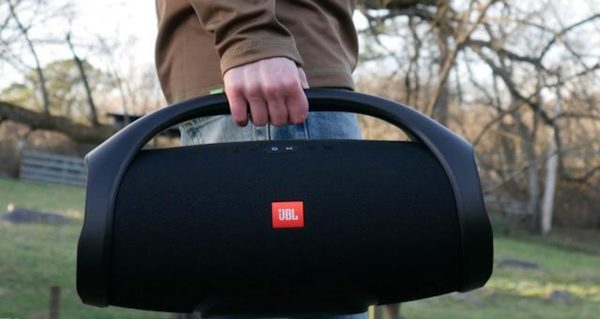
So you may think the issue is that speakers, like your phone, can no longer be plugged in with a wire – and that’s true for most speakers of the type people tend to buy for casual use today – the battery-powered Bluetooth consumer speakers you throw in a bag, from JBL or Bose, or any of the other many brands making this kind of speaker.
And you’d be right – but even if you’re one of the lucky ones and you’ve got an input socket that lets you use a cable to plug in your audio source (ie DJ gear) to your home speaker, you’re not out of the woods yet.
Try it, and you may just find there is still a delay! So why is this? And what can we do about it?

Blame it on the DSPs!
Well firstly, the reason for this is that modern speakers have increasingly powerful digital signal processors in them. These digital signal processors (or “DSPs”) do all kinds of things which are highly useful…to the consumer.
They limit the audio to make sure it doesn’t damage a speaker to start with, but they also tweak the incoming audio to make the sound quality as good as possible for the compromised nature of modern small speakers, especially portable ones. Your speaker will sound bigger and bassier than it would have without the digital signal processor.
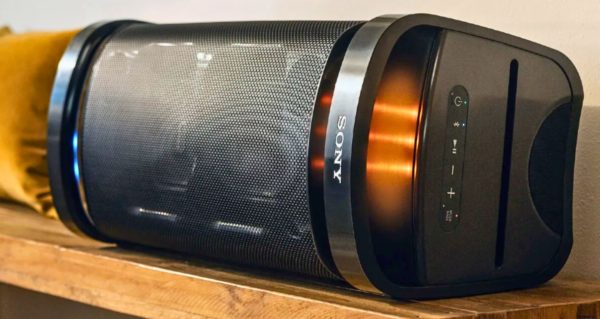
Another big reason for having this new technology in modern speakers is their often shouted about “party modes”. Manufacturers will tell you that by pressing a button you can link your speaker up to other speakers of the same brand or model to instantly have a multi-speaker party, wirelessly – pretty cool!
But the problem for DJs is that to enable all of this stuff, the DSPs are permanently doing their thing, however much or little you’re using the new fangled features. So unfortunately, for DJs this means that even when there is a wire plugged between your gear and the speaker, and even if you’re not using party mode, there is still nearly always, nowadays, a delay which is enough to make DJing awkward and sometimes close-on impossible.
How to check if you’ve got a problem
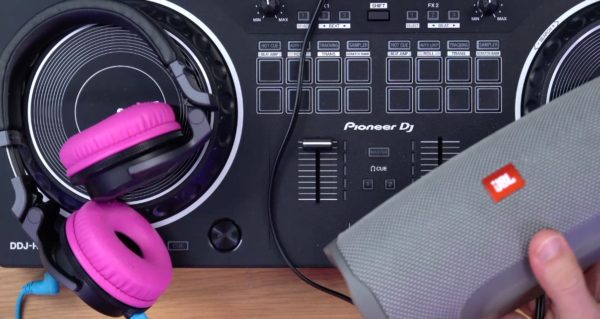
Are you worried the speaker(s) you’re using for DJing might have this problem? There’s a very simple test you can do. Assuming you haven’t already noticed there’s a bit of delay when you press start and stop, try this:
- Simply plug in a pair of headphones, set the DJ controller to have them play whatever track you’ve got playing through your speaker or speakers, and turn them up
- If the music coming out of the headphones sounds in any way out of time with the music coming out of your speakers, then you have this problem
That’s because DJ gear will always send the music directly up the wire to your headphones without any delay at all. If your speakers also have zero delay, both of those audio sources will be in perfect time. If not, it’ll be obvious.
How to fix it
OK, so you think you have an issue, what do you do next?
Well, there’s good news and bad news. The bad news is that you do have to find a different speaker or speaker system to DJ with. Nothing can fix that audio delay on speakers that have it.
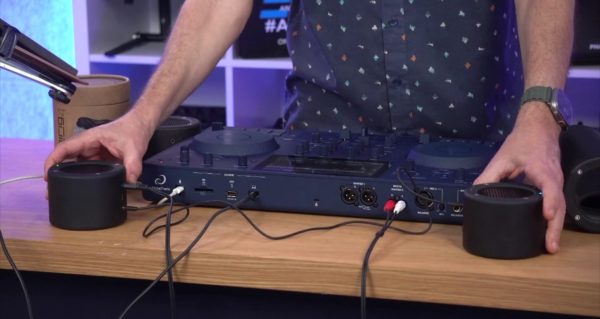
If you really want a Bluetooth portable speaker that you can charge up and take anywhere, but that you can also plug in DJ gear to DJ with, the only brand that we know that is zero latency is Minirig. It’s no surprise that this has become a cult classic among DJs who want this kind of speaker, primarily for this reason. But I’m sure there are others out there.
Read this next: 6 Essential Accessories For Every DJ
Just make sure you test first in-store or buy from someone with a good returns policy. Trust me, chances are slim that anything you buy like this will 1. even have a line-in nowadays, and 2. if it does, have zero delay.
The Best Speakers For DJing
Not sure where to start? Here are some of the safest types to choose from, depending on your speaker needs.
Computer speakers that have a line-in
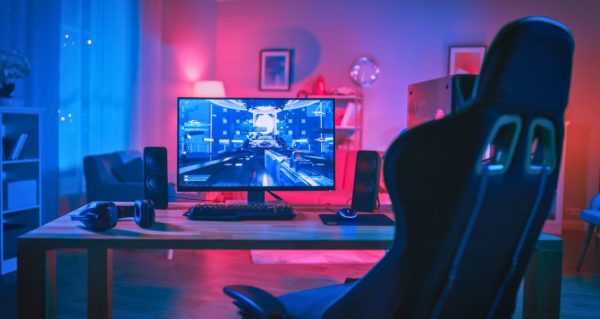
Computer speakers have to react instantly to the input because they’re used by gamers. And like DJs, gamers won’t tolerate any delay in hearing important sounds from their games. They’re usually good value, and often come with a subwoofer that can tuck under the desk.
So for a loud, immersive, and instantly reacting practice set-up, computer speakers can be a great choice. However, they tend to connect to the computer using a digital cable nowadays, ie a USB, so make sure you buy some that still have an analogue line-in.
Monitor speakers sold for DJs or producers
Clearly these will be fine, because the makers understand that DJs need instant audio. Monitor speakers that are suitable go from less than $100 a pair up to thousands per speaker, so the good news here is that there’s something at every price point.
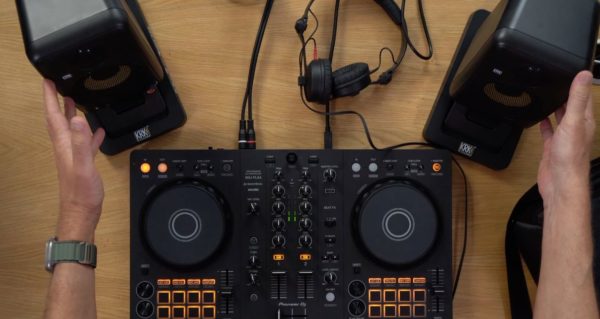
Just make sure you buy from a known DJ or music production brand or store, or check in the description that it says they have either zero (or very, very low latency, less than 15ms) or specifically say they are for DJs or producers
An analogue hi-fi amplifier and a pair of passive speakers
This is an old school option. All the speakers we’ve been talking about so far have the amplification built in. But of course, in years gone by, it was normal to have an amplifier in a box connected to speakers which only contained the actual speaker and no other circuitry other than a passive crossover to connect the lower and the upper speakers in the box.
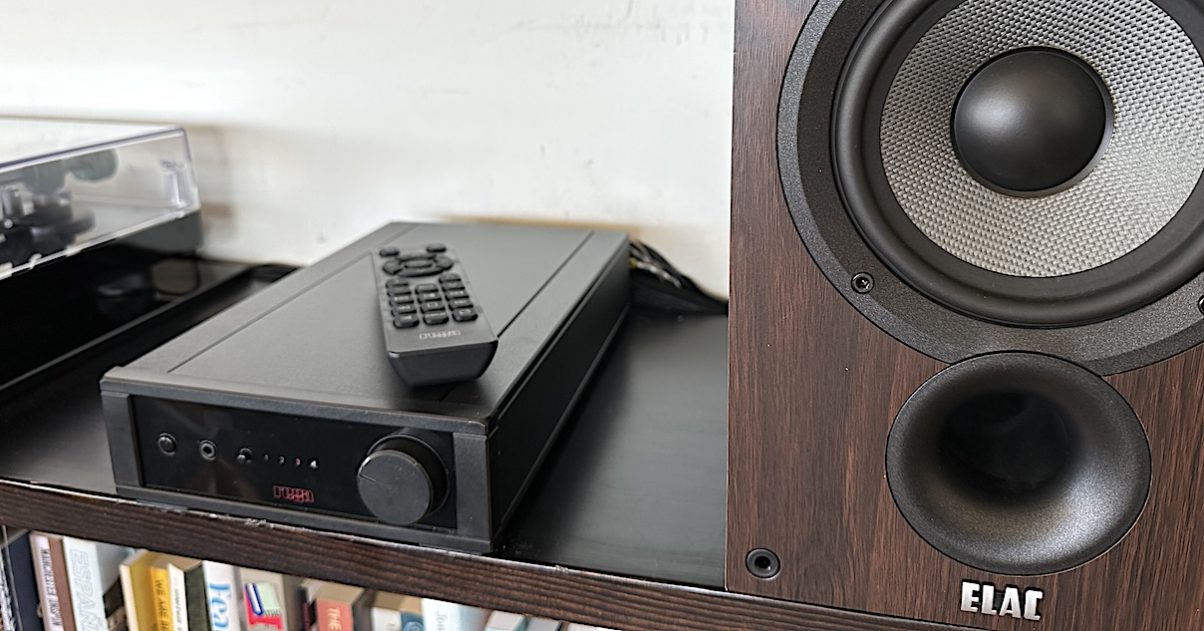
This kind of set-up, as long as the amplifier doesn’t introduce any DSP delay (which it won’t if you use an analogue amplifier) will work fine. You’ll more than likely dig out something old or second-hand to do this with, and that’s absolutely fine. This kind of set-up will always work well.

A PA speaker or speakers
PA speakers are designed to be used by performers in public. So if you’re looking for speakers you can practice on at home and play out on, these can be a good choice anyway. And some of them have batteries, are quite portable, and yes, they have Bluetooth, so they can be used for non-DJing convenient music too – although of course, they’re a lot bigger than most consumer Bluetooth speakers.
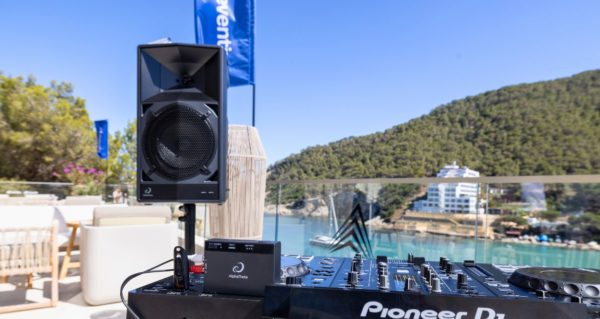
Ultimately, any PA speaker with microphone sockets on it, or that is sold for use by singer-songwriters, performers, and so on, will be absolutely fine. Again, these are all people who would never tolerate any kind of delay on their audio.
A home cinema speaker system
Clearly, this has to stay in sync with the pictures on the television. And so usually, manufacturers will think extra carefully about latency with this kind of set-up. The problem here is that your TV might not be near your DJ gear, which kind of defeats the object!

So assuming that you’ve got a home cinema system in the same place that you want to DJ, and assuming that system has a line-in, then the chances are pretty high that there won’t be any latency on that line-in, and it will work fine.
A DJ system with built-in speakers
Finally, especially if you’re a complete beginner who’s just thinking, “I just want to get going, I don’t want to worry about any of this stuff!”, a DJ controller with built-in speakers may be just the ticket. Both Numark and Denon DJ have at least one model in their range that has this.
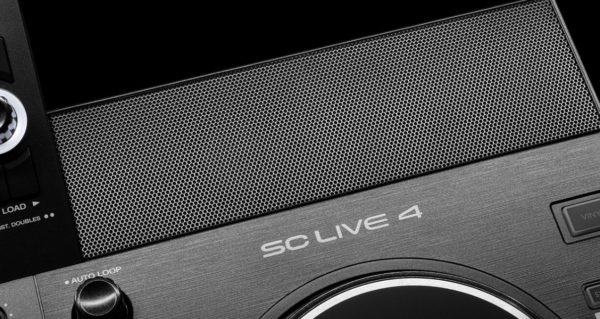
No, the speakers aren’t going to be any good for anything other than practising at home, or maybe a small party for your family in your living room. But at least you haven’t got to worry about any of these compatibility issues. (And also, to be honest, it’s pretty cool to just turn the thing on and get playing without worrying about plugging anything in.)
Finally…
It’s undeniably become harder to choose suitable speakers for DJ practice at home. The advances in speaker technology have benefited consumers massively, but also come at the expense of unwary beginner DJs who (understandably) might think that plugging a cable from their gear to their speaker will solve any latency issues.
Read this next: The 4 Types Of Loudspeaker Every DJ Needs To Know About
The moral here is that it usually doesn’t solve those issues, at least with small, battery-powered, portable consumer speakers that are so popular nowadays. Despite some models having a line-in socket, don’t expect this type of speaker set-up to work for DJing. Buy with care, and use one of the alternative systems we’ve spoken about if you want to be sure to avoid any problems.
You can learn more about choosing DJ gear, setting it all up, and everything else about how to start DJing on modern gear in our best-selling book on how to DJ, Rock The Dancefloor!, and our groundbreaking how to DJ training, The Complete DJ Course.




